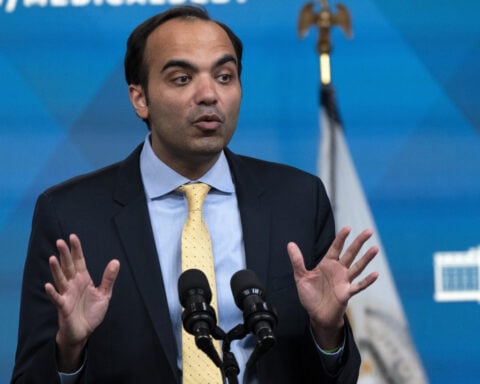Austin, Texas - This past February, air traffic controller Damian Campbell made a serious mistake that almost led to a disastrous jet crash at Austin-Bergstrom International Airport on a chilly, foggy morning. While a FedEx cargo plane was making its last descent to land on the same runway, Campbell gave the order for a Southwest Airlines flight to take off down runway 18L.
With visibility extremely low due to heavy fog, the FedEx pilots could not see the Southwest plane until the last possible moment.The FedEx pilots accelerated and used maximum power at the critical moment before the potential crash, just evading the Southwest jet by a distance of 100 feet. 131 individuals were on board the Southwest flight when the incident took place, albeit they were ignorant of it at that moment.
This concerning incident emphasizes the declining state of America's air traffic control system. While there haven't been any major accidents involving U.S. airlines since 2009, there have been several incidents of near misses happening on a weekly basis in 2022. Factors that contribute to this problem include a shortage of enough air traffic controllers, inadequate technology, and fatigue among the controllers.
The issues affecting air traffic control are particularly severe at Austin-Bergstrom. Despite a traffic increase of over 50 percent in the past decade, Austin now has only 35 air traffic controllers that are fully licensed, which is 40 percent below the goal level. Approximately 75 percent of shifts have had a shortage of staff, resulting in a need for unnecessary overtime. Up to already this year, Austin air traffic controllers had accumulated more than 10,000 additional hours of labor.
Managers in Austin have warned for years that short staffing levels present a real danger to air safety. However, their requests for additional support have been ignored. To compound the problem, Austin does not have ground radar, which means that air traffic controllers are unable to visually monitor planes on runways and taxiways. On foggy days their vision is obstructed, forcing them to rely solely on pilot radio calls to ascertain aircraft positions.
Compounding the staffing shortage, Austin air traffic controllers lack critical technological tools to maintain safety during poor visibility. Without ground radar, they have no way to visually monitor planes moving on the taxiways and runways. Some air traffic controllers have resorted to using the public flight tracking website Flightradar24.com to approximate planes' locations, despite the site not being FAA approved.
Other equipment failures have further hampered air traffic control operations. Austin's system for gauging wind speed and direction was out of service for weeks this year, forcing air traffic controllers to depend on a windsock for data. Radio frequencies that air traffic controllers use to talk to pilots have periodically cut out at dangerous moments. Radar feeds tracking planes in the sky have failed, and runway lights have malfunctioned.
Making matters even worse, Austin has had a shortage of experienced air traffic controllers for years. Nearly three-quarters of shifts are understaffed, forcing excessive overtime. Air traffic controllers describe being exhausted and overworked, making errors more likely. Some have turned to alcohol and sleeping pills to cope with the relentless stress.
While air traffic controller Damian Campbell's grievous errors initiated February's close call, the incident also lays bare the systematic inadequacies plaguing Austin's airport and the nation's air traffic control system generally. Insufficient staffing, outdated technology, and air traffic controller burnout have coalesced into a hidden crisis, with passengers and crew unaware of the near-misses happening around them weekly.
Air traffic controller advocates have pleaded for years for more staff and resources. But Austin, like 99% of U.S. air traffic control facilities this year, remains severely understaffed. Despite multiple recent close calls, little has been done to address the staffing emergency and technology gaps.
The air safety net that underpins air travel in America is unraveling, exposing passengers to avoidable catastrophes. While no fatal crashes have occurred in many years, the system operates on the razor's edge. Across the country, mistakes by exhausted, overworked air traffic controllers have become a leading contributor to the close calls transpiring multiple times per week.
Shockingly, some U.S. airports still lack ground radar systems to visually track planes on runways and taxiways. This forces air traffic controllers to rely on pilot radio calls alone to monitor aircraft positions, especially perilous in poor visibility conditions. Outdated radar scopes provide limited field of vision and fidelity. Radio failures disrupt critical controller-pilot communications at the worst possible moments. Runway indicator lights malfunction, and essential equipment like wind gauges can be out of service for weeks.
The technology gaps stem from the piecemeal nature of the national air traffic control infrastructure, which lacks systematic modernization. The FAA has been trying to upgrade the system for decades, but progress has been mired in delays and cost overruns. Meanwhile, stopgap fixes and patchworks keep the whole rickety system barely airborne.
Compounding the technology problems is a nationwide shortage of air traffic controllers. 10,000 controllers are slated to retire over the next decade. But training replacements is slow and expensive. It takes years to become fully certified. The end result is understaffing, with the controller workforce unable to keep pace with surging traffic volume.
This understaffing contributes directly to reduced safety margins. The nationwide controller shortage means 99% of facilities have had staffing shortfalls this year. Air traffic controllers are working exhausting amounts of overtime to cover gaps. Minutes are carefully shaved between takeoffs and landings to prevent backlogs. Corners are cut that leave zero room for error.
Air traffic controllers describe staffing shortages having dire impacts on performance and focus. Fatigue dulls thinking and erodes judgment as overtime mounts. Morale plummets amid the endless crunch. Turnover has spiked as air traffic controllers quit rather than endure the grueling conditions. Some turn to alcohol and pills to aid sleeping after long shifts. Errors happen, followed by tragedy.
Staffing shortfalls force those air traffic controllers remaining to work longer hours with shorter breaks. Even when not actively controlling traffic, they must undergo continual training and recertification. But outdated staffing models don't account for these extra duties, meaning air traffic controllers' time "on position" directing traffic far exceeds federal limits intended to prevent fatigue.
Safety advocates contend these excessive overtime hours and relentless schedules diminish performance, increasing the chances of mistakes. They compare it to pilots flying long haul routes without relief crews. Yet years of repeated warnings have produced no reform, while close calls mount.
The FAA counters that despite increased traffic volume, air traffic controllers today work fewer hours directing aircraft than 15 years ago. But air traffic controllers dispute the data, arguing it excludes training time and other duties. They maintain the continual overtime is unsustainable, putting passenger safety at growing risk.
A microcosm of the broader air traffic control crisis, Austin encapsulates all the chronic issues: insufficient staffing, obsolete technology, increased overtime, and dangerous errors. Yet Austin is hardly alone. Several other major facilities have had their own near calamities in recent months...
In every case, the combination of understaffing, outdated technology, and exhausted air traffic controllers has left the system operating on borrowed time. Aviation experts decry the inability to learn from past mistakes. They say it is sheer statistical luck that a fatal disaster has yet to occur amid the systemic failures.
Top FAA officials have tacitly acknowledged the technology shortcomings in repeated requests to Congress for upgrades and modernization. But adequate funding has failed to materialize, as air traffic control competes with other federal priorities and program costs spiral. Still, critics contend the FAA must take action within existing budgets to address the air traffic controller staffing crisis and reform outdated procedures.
Until meaningful steps are taken to modernize technology, increase staffing, update protocols, and reduce air traffic controller fatigue, air travel in the U.S. will continue to court catastrophe. The series of glaring safety lapses makes clear that the problem is systematic and in urgent need of comprehensive reform. Industry leaders warn the system suffers from serious vulnerabilities that could result in avoidable tragedy.
Many fear it may take a catastrophic crash to spur concrete action. They point to a record of incremental changes and half-measures that follow major incidents, but never address core deficiencies. They say the traveling public would be shocked to know the true decay of the nation's air traffic control system, and how much now depends upon the skill and vigilance of fatigued air traffic controllers.
But there are also reasons for optimism. Recent close calls have focused public and political attention like never before. New FAA leadership has an opportunity to implement genuine modernization and increased staffing. With passenger travel projected to keep expanding, the imperative for meaningful investment has never been greater.
Strong reforms will require substantial expenditure, updated equipment, increased personnel, and improved training. But after years of band-aid fixes, many argue comprehensive overhaul is the only way to create an air traffic control system befitting the nation. Through coordinated revitalization, the promise of safe and modern air travel can finally be fulfilled.
The crux is political will. It remains to be seen whether the FAA and lawmakers have the resolve to deliver meaningful change. But in Austin and across the country, the need for urgent action has become undeniable.

 What is seditious conspiracy, which is among the most serious crimes Trump pardoned?
What is seditious conspiracy, which is among the most serious crimes Trump pardoned?
 Savannah women brings hope and help with new Maternal Mental Health app
Savannah women brings hope and help with new Maternal Mental Health app
 Amazon to close 7 warehouses in the Canadian province of Quebec and eliminate 1,700 jobs
Amazon to close 7 warehouses in the Canadian province of Quebec and eliminate 1,700 jobs
 House prepares to pass immigrant detention bill that would be Trump's first law to sign
House prepares to pass immigrant detention bill that would be Trump's first law to sign
 Lewis Hamilton says driving a Ferrari F1 car for first time was 'exciting and special'
Lewis Hamilton says driving a Ferrari F1 car for first time was 'exciting and special'
 The head of a federal agency for consumers has packed up his office. But will Trump fire him?
The head of a federal agency for consumers has packed up his office. But will Trump fire him?
 Meagan Good says goodbye to 'Harlem,' hello to her future with Jonathan Majors
Meagan Good says goodbye to 'Harlem,' hello to her future with Jonathan Majors
 K-9's retirement party was everything a dog could want
K-9's retirement party was everything a dog could want
 Why some Instagram users aren’t able to unfollow Trump and JD Vance
Why some Instagram users aren’t able to unfollow Trump and JD Vance
 Air Traffic Control
Air Traffic Control







